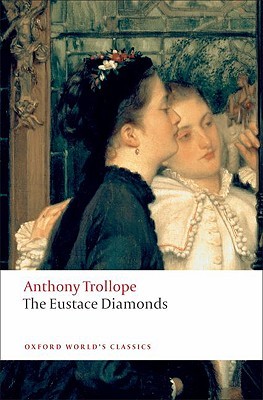Board books, Picture books, Early Readers:
- A Home for Mr. Emerson. Barbara Kerley. Illustrated by Edwin Fotheringham. 2014. Scholastic. 48 pages. [Source: Review copy]
- My Lucky Little Dragon. Joyce Wan. 2014. Scholastic. 14 pages. [Source: Review copy]
- Giraffes Can't Dance Number Rumba Counting Book. Giles Andreae. Illustrated by Guy Parker-Rees. 2014. Scholastic. 12 pages. [Source: Review copy]
- A Big Hug for Little Cub. Lorie Ann Grover. Rosalinda Kightley. 2014. Scholastic. 18 pages. [Source: Review copy]
- Tickety Toc Count Our Friends! 2014. Scholastic. 12 pages. [Source: Review copy]
- How Does Baby Feel? Karen Katz. 2013. Simon & Schuster. 14 pages. [Source: Library]
- Lego Super Heroes Phonics. Quinlan B. Lee. 2014. Scholastic. Includes 10 Books and 2 Workbooks. [Source: Review copy]
- There, There. Sam McBratney. Illustrated by Ivan Bates. 2013. Candlewick. 40 pages. [Source: Review copy]
- Bear In Love. Daniel Pinkwater. Illustrated by Will Hillenbrand. 2012. Candlewick. 40 pages. [Source: Review copy]
- I Haiku You. Betsy E. Snyder. 2012. Random House. 28 pages. [Source: Review copy]
- Pigs in Pajamas. Maggie Smith. 2012. Random House. 32 pages. [Source: Review copy]
- Rain! Linda Ashman. Illustrated by Christian Robinson. 2013. Houghton Mifflin Harcourt. 32 pages. [Source: Review copy]
- The Day The Crayons Quit. Drew Daywalt. Illustrated by Oliver Jeffers. 2013. Penguin. 40 pages. [Source: Review copy]
- The Dolphins of Shark Bay. Pamela S. Turner. 2013. Houghton Mifflin Harcourt. 80 pages. [Source: Review copy]
- Beauty's Daughter. Carolyn Meyer. 2013. Houghton Mifflin Harcourt. 352 pages. [Source: Review copy]
- Half A Chance. Cynthia Lord. 2014. Scholastic. 224 pages. [Source: Review copy]
- The Westing Game. Ellen Raskin. 1978. 182 pages. [Source: Library]
- Salt: A Story of Friendship in a Time of War. Helen Frost. 2013. FSG. 160 pages. [Source: Library]
- The Impossible Knife of Memory. Laurie Halse Anderson. 2014. Penguin. 400 pages. [Source: Library]
- The Long Winter. Laura Ingalls Wilder. 1940. 334 pages. [Source: Library]
- The Grimm Conclusion. Adam Gidwitz. 2013. Penguin. 368 pages. [Source: Library]
- Bubble World. Carol Snow. 2013. Henry Holt. 352 pages. [Source: Library]
- Hideous Love: The Story of The Girl Who Wrote Frankenstein. Stephanie Hemphill. 2013. HarperCollins. 320 pages. [Source: Library]
- The New Treasure Seekers. E. Nesbit. 1904. 252 pages. [Source: Book I Bought]
- Angel Island. Russell Freedman. 2014. Houghton Mifflin Harcourt. 81 pages. [Source: Review copy]
- The Wouldbegoods. E. Nesbit. 1901. 156 pages. [Source: Book I Bought]
- The Eustace Diamonds. Anthony Trollope. 1873. 794 pages. [Source: Book I Bought]
- The Guernsey Literary and Potato Peel Pie Society. Mary Ann Shaffer and Annie Barrows. 2008. Random House. 274 pages. [Source: Library]
- To Kill A Mockingbird. Harper Lee. 1960. 281 pages. [Source: Book I Own]
- Edenbrooke. Julianne Donaldson. 2012. Shadow Mountain. 240 pages. [Source: Bought]
- Colonel Brandon's Diary. Amanda Grange. 2009. Penguin. 304 pages. [Source: Library]
- The Second Confession (Nero Wolfe). Rex Stout. 1949. 256 pages. [Source: Book I Bought]
- Dick Turpin: The Myth of the English Highwayman. James Sharpe. 2004. Profile Books. 258 pages. [Source: Book I bought]
- Sword in the Storm. David Gemmell. 1998. Del Rey. 448 pages [Source: Library]
- Midnight Falcon. David Gemmell. 1999. Del Rey. 448 pages. [Source: Library]
- Where Courage Calls. Janette Oke and Laurel Oke Logan. 2014. Bethany House. 336 pages. [Source: Library]
- Knowledge of the Holy. A.W. Tozer. 1961/1978. HarperCollins. 128 pages. [Source: Book I Bought]
- Rachel. Jill Eileen Smith. 2014. Revell. 320 pages. [Source: Review copy]
- Love's Sweet Beginning. Ann Shorey. (Sisters at Heart #3). 2014. Revell. 345 pages. [Source: Review copy]
- Isaiah 36-66 (Thru the Bible #23). J. Vernon McGee. Thomas Nelson. 204 pages. [Source: Book I bought]
- Beyond the Shadow of the Brownstone. Valerie Lawrence. 2013. Carpenter's Son Publishing. 272 pages. [Source: Review copy]
- A Heart Like His: Intimate Reflections On The Life of David. Beth Moore. 1996. B&H. 297 pages. [Source: Book I bought]
- A Little Book for New Theologians: Why and How to Study Theology. Kelly M. Kapic. 2012. IVP. 126 pages. [Source: Book I Bought]
- More Precious Than Gold: 50 Daily Meditations on the Psalms. Sam Storms. 2009. Crossway. 288 pages. [Source: Review copy]



